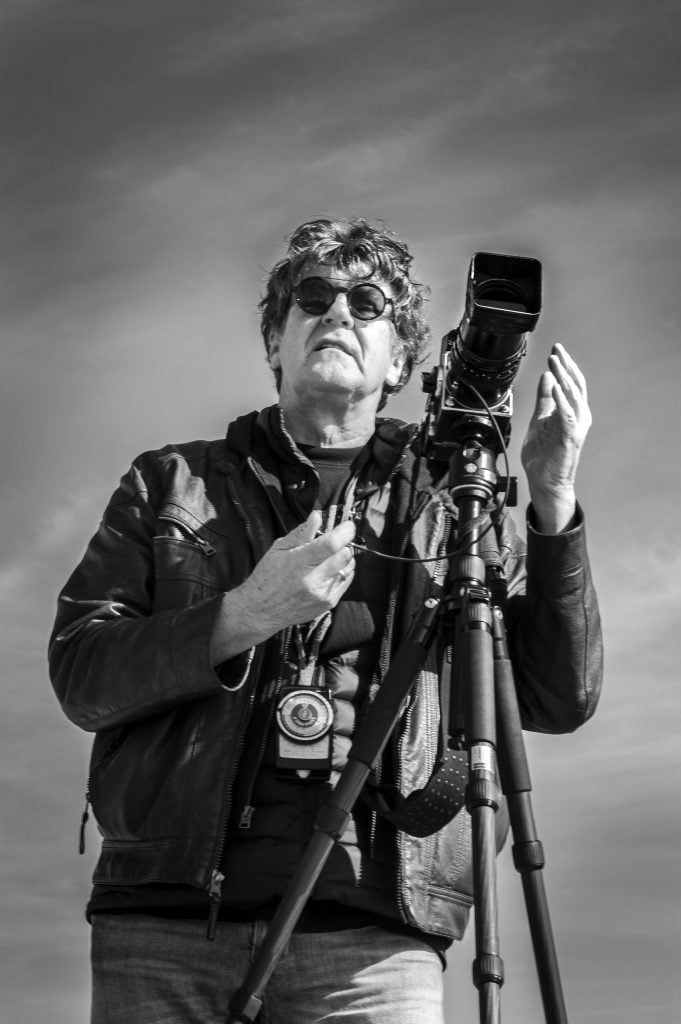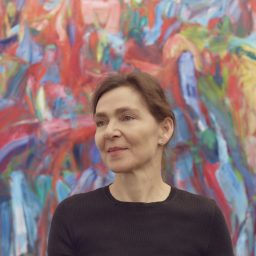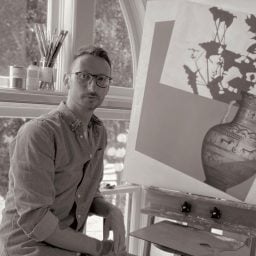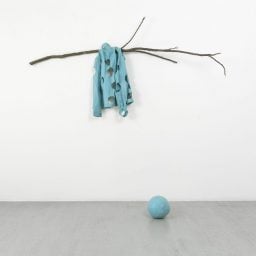Seattle-based British photographer Michael Kenna (b. 1953) has garnered an international reputation for his black-and-white landscape images, taken around the world in both rural and urban locales. His work is immediately recognizable for its enigmatic sense of atmosphere and technical precision—which is achieved both on site and in the darkroom. Kenna’s aesthetic acuity has led his work to be exhibited widely around the world; he has been the subject of hundreds of solo exhibitions, and his photographs are in more than a hundred institutional collections and published in eighty-five monographs and exhibition catalogues thus far.
Recently, Kenna was named an Officer of Arts and Letters by the Ministry of Culture of France, recognizing his significant contribution to the arts and for his achievements in photography. Recently, we reached out to Kenna to learn more about his practice and process, as well as what’s next for the award-winning photographer.
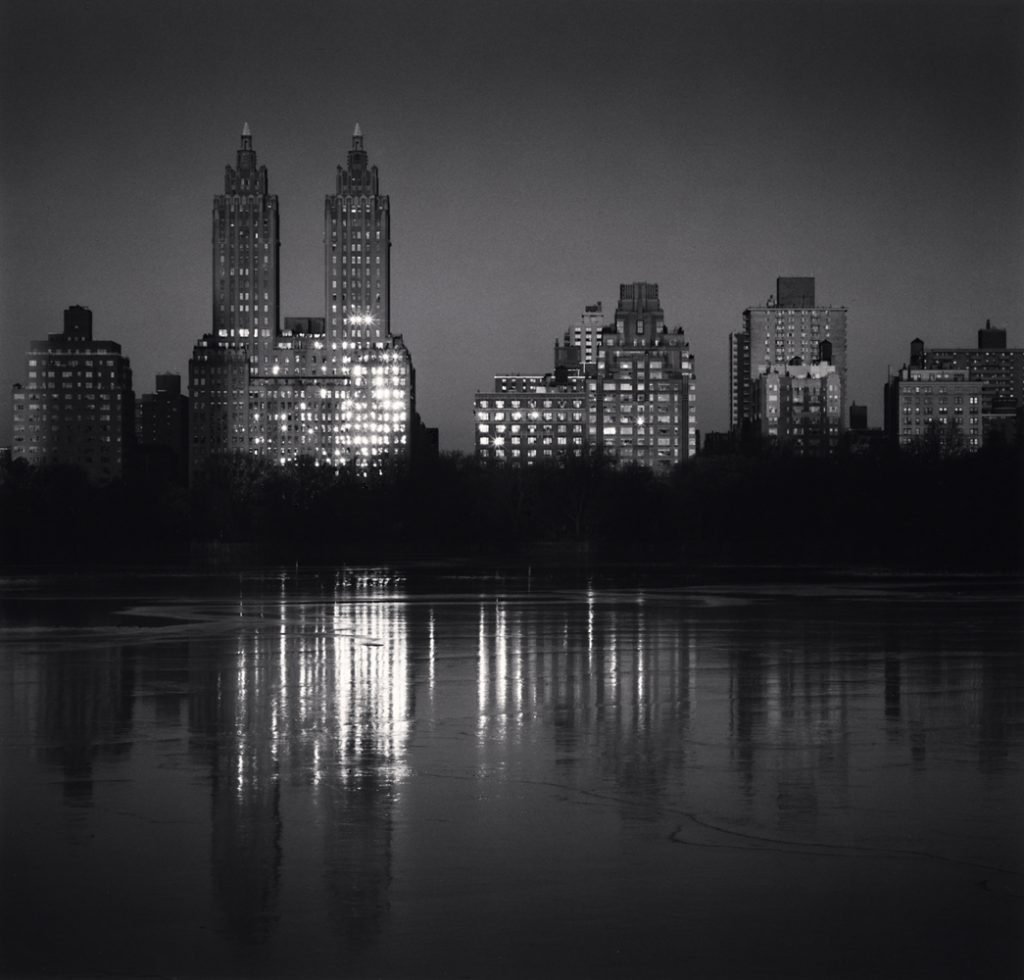
Michael Kenna, Sunrise on Eldorado, New York, New York, USA (2010). Courtesy of G. Gibson Gallery, Seattle.
You are recognized as on one of the preeminent landscape photographers in the world. Looking back to your early career, what initially inspired your interest in landscape photography over other genres?
I was born and brought up in Widnes, an industrial town in North West England. I had five siblings, but was quite solitary, content for the most part with making up my own adventures and acting them out in the local parks and streets. I wandered around train stations, factories, parks, rugby grounds, canal towpaths, and in empty churches and graveyards, all locations that I would later find interesting to photograph. I didn’t use a camera at the time, but I suspect this period was more influential on my vision than the years I later spent in art and photography schools. As an altar boy at my local Catholic church, I assisted the priests at baptisms, confirmations, weddings, and funerals. At ten, I was accepted at a seminary boarding school, where I stayed for seven years. It taught me important lessons for my later photographic work, including discipline, silence, meditation, patience and an innate belief that some things might be unseen, yet can still be present.
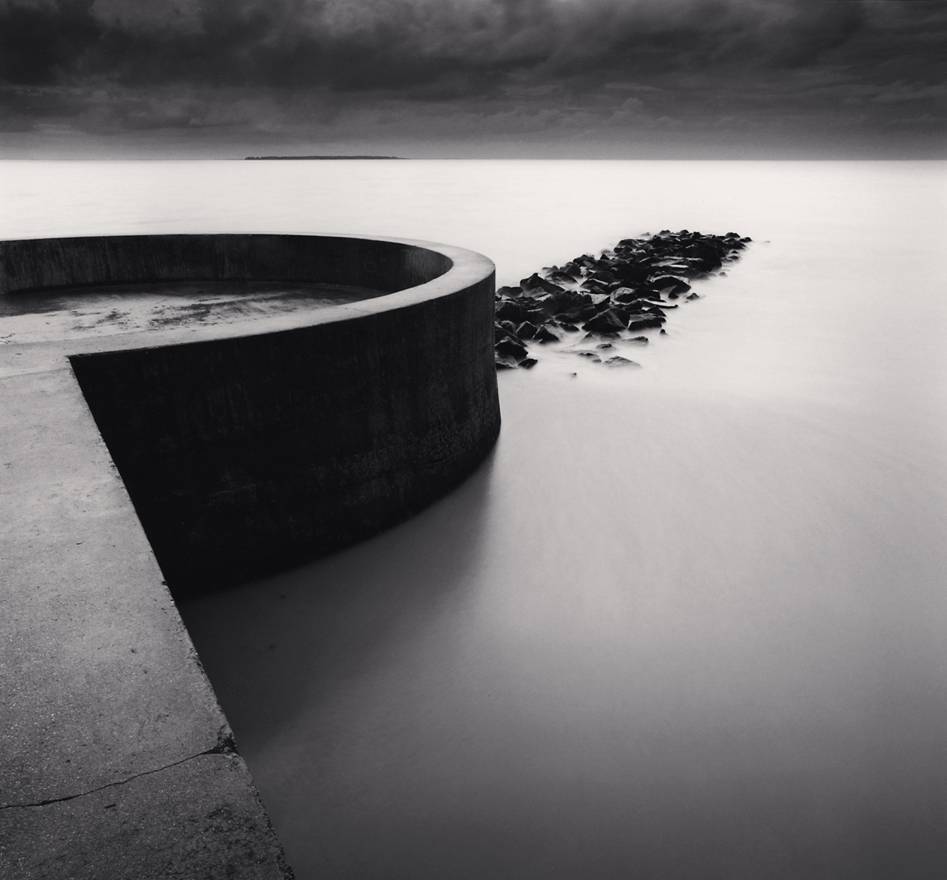
Michael Kenna, Pier’s End, Chatelaillon Plage, France (2000). Courtesy of G. Gibson Gallery, Seattle.
Late last year, at the time you were awarded the prestigious Officer of Arts and Letters by the Ministry of Culture in Paris, it was announced that you were donating your entire body of work to France. Can you tell us about what led to this incredible decision?
For the record, at Paris Photo last November, Rima Abdul Jamal, the French Minister of Culture, announced the donation of my life archive to be housed by the French state at the Mediatheque de Photographie et Patrimoine. The donation includes 3,683 original silver gelatin photographic prints of images made in 43 different countries, along with their accompanying negatives and scans, 175,000 other negatives accompanied by their corresponding contact sheets, 6,422 working prints from the years 1983 to 2000, 1,280 Polaroid prints, 87 books and monographs printed on my work, 200 prints of other photographers that I have purchased, traded or been gifted, and all the archives relating to my artistic activity for the past 50 years. It should be noted that I retain full, complete, and unrestricted use of my negatives and all usage rights during my lifetime. The negatives will only be transferred on my death. In most respects, nothing has changed for me, except that I now have great peace of mind knowing that I will not be leaving behind a Gordian Knot for my heirs to untangle when I eventually fly with the angels.
Creatively, what does your process look like? Do you approach new projects with a clear idea of what you would like to capture or is it more spur of the moment?
I love the words of Rumi: “Let yourself be silently drawn by the strange pull of what you really love. It will not lead you astray.” Following his advice, I look for what attracts me in our 3D world, and attempt to translate it into 2D black and white prints. I search for subject matter with visual patterns and graphic compositions. An image often involves the juxtaposition of our human made structures with the more fluid and organic elements of the landscape. I enjoy places that have mystery and atmosphere, perhaps a patina of age, a suggestion rather than a description, a question or two. I look for memories, traces, evidence of the human interaction with the landscape. Sometimes I photograph pure nature, at other times urban structures.
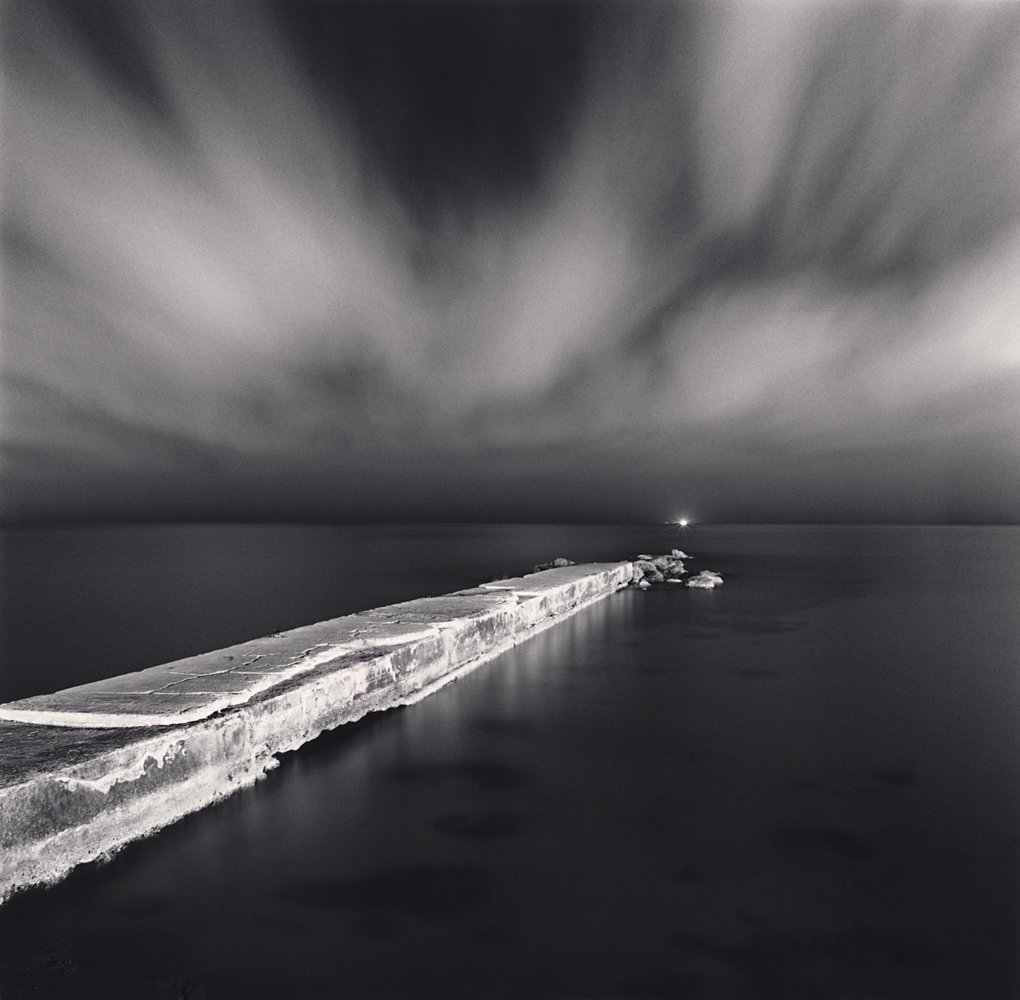
Michael Kenna, Night Pier, Palma, Mallorca, Spain (2017). Courtesy of G. Gibson Gallery, Seattle.
Where do you most commonly find or look for inspiration? Are there any artists or other photographers that have particularly influenced your work?
I hail from a European tradition and my early photographic masters included Eugene Atget, Bill Brandt, Brassaï, Mario Giacomelli and Josef Sudek, along with the Americans: Ruth Bernhard, Harry Callahan, Edward Steichen, and Alfred Steiglitz. I suppose they are all romantics at heart, concerned with photographing a feeling as much as documenting external reality.
Can you talk a bit about your practice from a technical perspective, what equipment do you prefer, and how do you print your images?
I have used the same medium format analog film cameras for almost 40 years. At this point, I don’t need to think much about them, except when they complain of old age and break down. I remain very much attached to the somewhat old fashioned and wonderfully traditional silver printing process. I spend hours contentedly working in the darkroom. Sometimes, I feel like a sculptor trying to discover and free the hidden figure inside the block of stone. Burning, dodging, cropping, playing with contrast filters is challenging, fun, and often hard work. I love the long, slow, unpredictable journey to produce these jewel-like interpretations. All prints are subtly sepia toned, mounted, matted, retouched by hand, titled, stamped, numbered, etc., before they are sent on their merry way, hopefully to find enthusiastic collectors. I make all the prints myself. In a recent exhibition of 100 tree studies, dated from 1973 to the present, I referred to the prints as “my family.”

Michael Kena, Poplar Trees, Fucino, Abruzzo, Italy (2016). Courtesy of G. Gibson Gallery, Seattle.
Is it desirable to create the ultimate/timeless work, but doesn’t “top of the ladder” bring up the question of “what’s next?” I.e., isn’t such a personal peak “the end”?
This question reminds me of a childhood game I played in England called “Snakes and Ladders.” One minute you are up at the top of a ladder and the next, you slide down the snake. I prefer to be in the present and like to behave as if the past and future does not exist. Of course, that’s theory, and in practice it doesn’t always work. The notion of being at the “top” makes little sense to me. The famous photographer Bill Brandt once said: “Photography is not a game. There are no rules.” Unlike football teams, artists do not end up on “top.” Of course, we must always reach for the sky—the motto of my favorite football team, Everton, is “Nil Satis Nisi Optimum”—“Nothing but the best is good enough.” If we are very fortunate, occasionally, we might seem to get close to where we aspire. This is just an illusion. Art, like life, is a journey, there is no top or bottom.
What is next? Is there a region or locale that you haven’t photographed yet that you’d like to—or perhaps one you’d like to return to?
My needs are straight forward: long walks, time with good friends and close family, some solitude now and then, great wine, some strumming on my guitar. Photography continues to be a core passion, and I generally work on multiple projects over long periods of time. With an extensive archive of negatives, I probably already have more than enough images to keep me busy printing for the rest of my life, even if I retired my cameras right now, which I have absolutely no intention of doing.
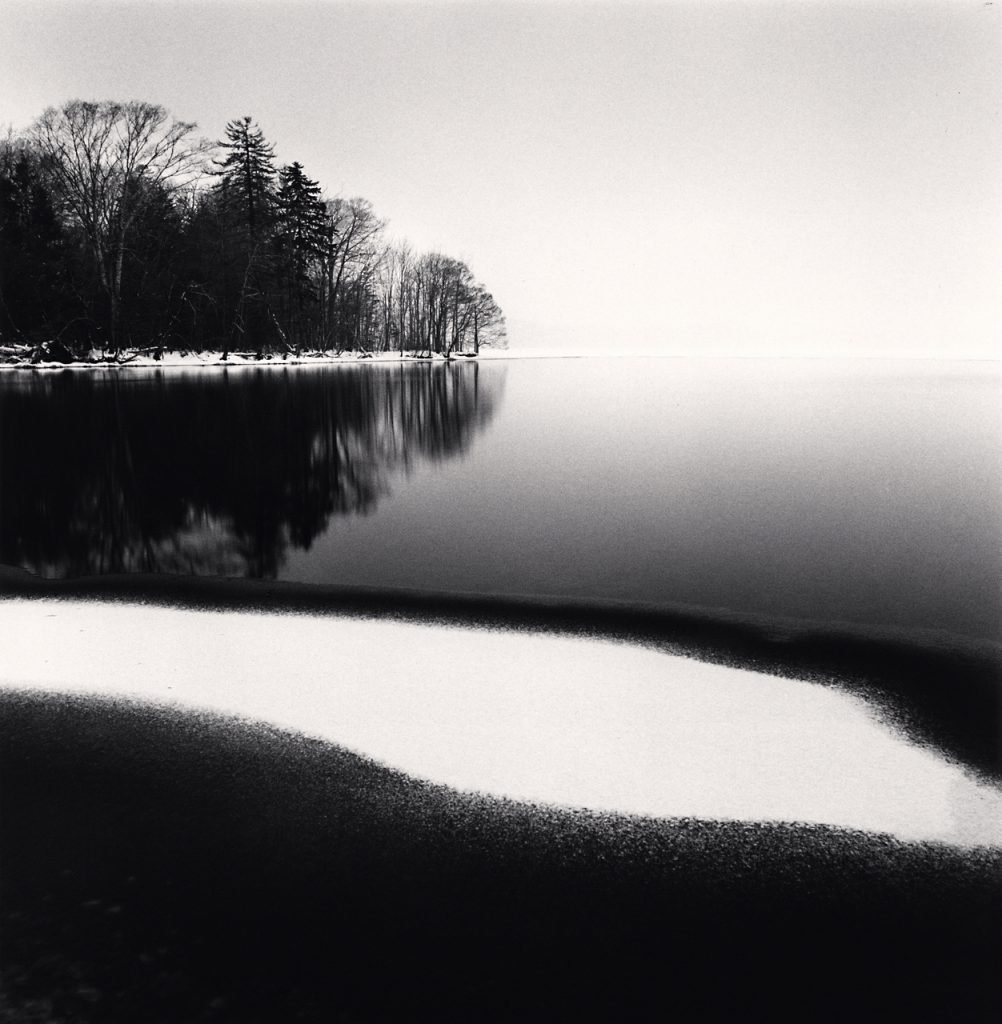
Michael Kenna, Hyomon, Study 2, Hokkaido, Japan (2020). Courtesy of G. Gibson Gallery, Seattle.
See more work by Michael Kenna with G. Gibson Gallery here.
